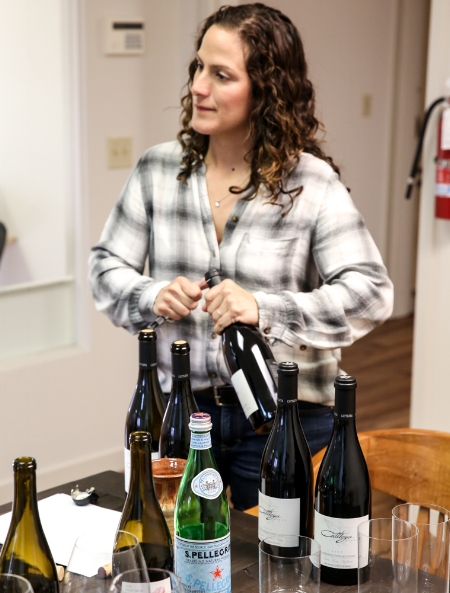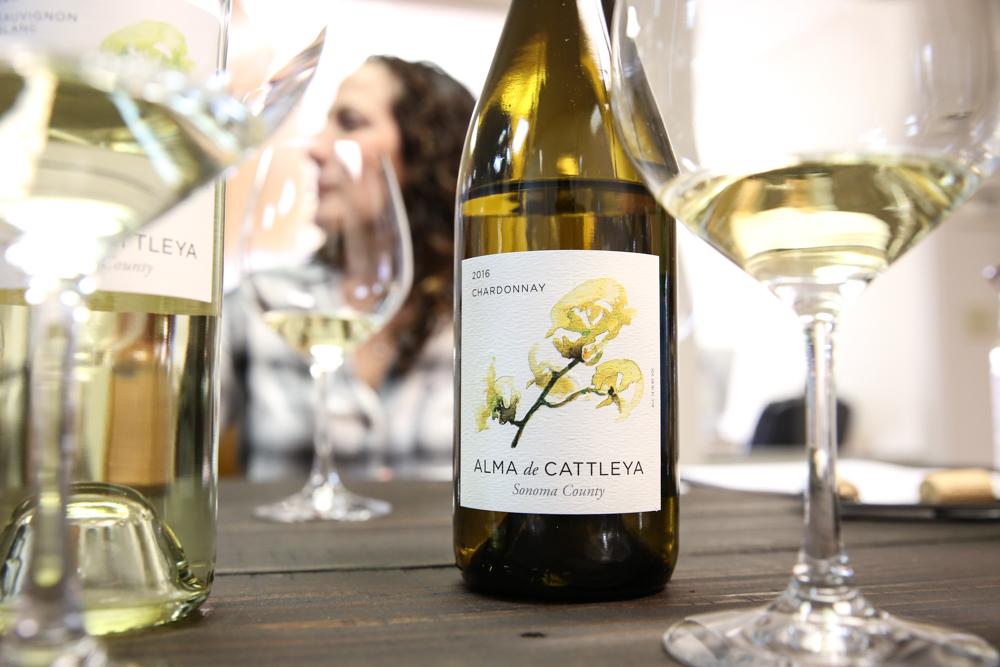California Clarity – Part II
Pinot Noir vineyards in Sonoma County
Part two of my California story begins in Sonoma, rather than the Santa Lucia Highlands. To be honest, it actually begins in Medellín, Colombia where winemaker Bibiana González Rave was born and raised before moving to France in search of her wine education. When I say she "moved to France," I mean she packed up a bag, took a flight to Paris, caught a train to Cognac, and sat in the office of the Angoulême School of Viticulture and Enology until the dean agreed to accept her as a student. She had no appointment, no contacts in France, no real grasp of the language, and no previous experience working with wine at that point. She did, however, have a passion, intensity, and tenacity for proclaiming her intentions, a combination of traits I recognized in her immediately as the head of admissions at Angoulême likely did when he was first confronted with her determination. He had no choice but to let her in at that point because she wasn't going to take no for an answer. After finishing her initial technician diploma, Bibiana followed that up with a degree in Oenology from the University of Bordeaux, working harvests at Château Haut-Brion and other top estates in the area. After picking up additional experience in both Burgundy and the Northern Rhône, alongside a stint in South Africa, she made her way out to California and worked her way up into a head winemaking position at Lynmar Winery in the Russian River region. It was in Sonoma that she finally found her heart's terroir and the ability to make wines that truly expressed her soul's intentions. So she decided to put down roots.
"When I think of Sonoma, I think of farming and how that lifestyle connects the community," Bibiana said to me when I asked why the region spoke to her. While all of Northern California's major wine-growing regions originally began as farming communities, Sonoma has pushed back against some of the moneyed-interests one finds today in Healdsburg, along with the changes those investments have had on both the flavor profiles and price points of Napa's top wines. There's still a desire to make food-friendly, balanced, and climate-driven wines among Sonoma's best winemakers, which brings me back to Bibiana. Not only does she want to to make expressive wines from Sonoma County, she wants to make them accessible. Hence, her newly-established label Alma de Cattleya, a project focused on sub-$30 options that exhibit the crisp, cool climate character of Sonoma County fruit with a message geared toward consumption rather than collecting. Virtuoso performances from the world's best vineyards still dominate much of today's terroir-driven fascination in aficionado circles. More and more drinkers are being taught that absolute purity goes hand in hand with quality. Yet, as ambitious producers scramble to collect parcels from the most coveted vineyard zip codes, Bibiana's Alma wines are focused on value and quality as a general expression of Sonoma, rather than capturing the embodiment of site-specific fruit. That's not to say she's not interested in the individuality of California's top vineyards. Her incredible single vineyard wines (made in incredibly small quantities) are part of her higher-end Cattleya label, but what's driving her passion with the Alma portfolio is very similar the story I wrote about yesterday concerning Jeff Pisoni's Luli label: she wants to make wines that speak to the soul of the region as a whole, and that people actually living in Sonoma can afford and enjoy regularly with friends and family.
There's another fact about Bibiana that I need to mention at this point: she's married to Jeff Pisoni, son of Lucia maverick Gary Pisoni and winemaker for all Pisoni-related projects. Together they make a collaborative label called Shared Notes, but the Cattleya project is her baby (along with the two young children she and Jeff share). Through her relationship with Jeff, along with her own professional contacts throughout Sonoma, Bibiana has forged friendships with growers all across Sonoma and its from those small farmers that she sourced much of the fruit for the Alma de Cattleya wines: a delightful rosé of Pinot Noir, a textural Sauvignon Blanc, an impeccable Chardonnay, and a blistering Pinot Noir. Sourcing affordable, high quality fruit in California today is no easy task, especially with the single vineyard craze at an all-time high. For example, if Bibiana buys fruit from a lesser-known site and the wine she makes from that vineyard gets a great review, it might motivate the grower to raise his price the next time around. It turns out that big scores and glowing critical reviews can lead to higher-priced grapes as well as bottles. "There's a tendency for some growers to think the fruit is all that matters," she explained; "As if the quality of the wine is guaranteed before the wine is even made and the winemaker has no role in that expression." For that reason, long-standing friendships play a big factor in the small Sonoma growing community. In Bibiana's case, it helps that she's well-connected and well-liked. But it's also her capability and potential to make something truly wonderful with their fruit that has growers excited about working with Bibiana these days.
And here's the other issue: Bibiana's wines are indeed getting big scores and glowing reviews, so keeping her new under-the-radar label a secret for K&L customers won't be easy for long. Her outstanding 2016 Alma de Cattleya Sonoma County Pinot Noir notched a sold 90 point score from the recent issue of the Wine Spectator (and a 91 from the Enthusiast), while her lone Santa Lucia Highland expression—the 2014 Cattleya Wines "Soberanes Vineyard" Syrah—grabbed an incredible 97 point score from Jeb Dunnuck who wrote: "I suspect it's the greatest wine made to date from this site." I tasted both with Bibiana yesterday at her winery office and was completely won over by both their freshness and their quality for the price. Her value-oriented wines were indeed superb values and her entire range of top-shelf wines tasted both expensive and meticulously cared for. I'm hoping to put aside a large chunk of the 2016 Alma de Cattleya Chardonnay for our wine club members in the near future as I thought it was downright brilliant, rich and surprisingly weighty for for something that fresh. I'm not only excited to bring her wines to K&L, I'm excited to drink them at home with my wife and family members. Of course, that was Bibiana's intent behind the Alma project in the first place, to get us all fired up about sharing these wines with our loved ones, rather than burying them in our cellars in anticipation of the perfect moment. It's another very Sonoma-esque aspect of her vision: quality without pretense or pageantry. That's exactly what I'm after these days.
-David Driscoll




